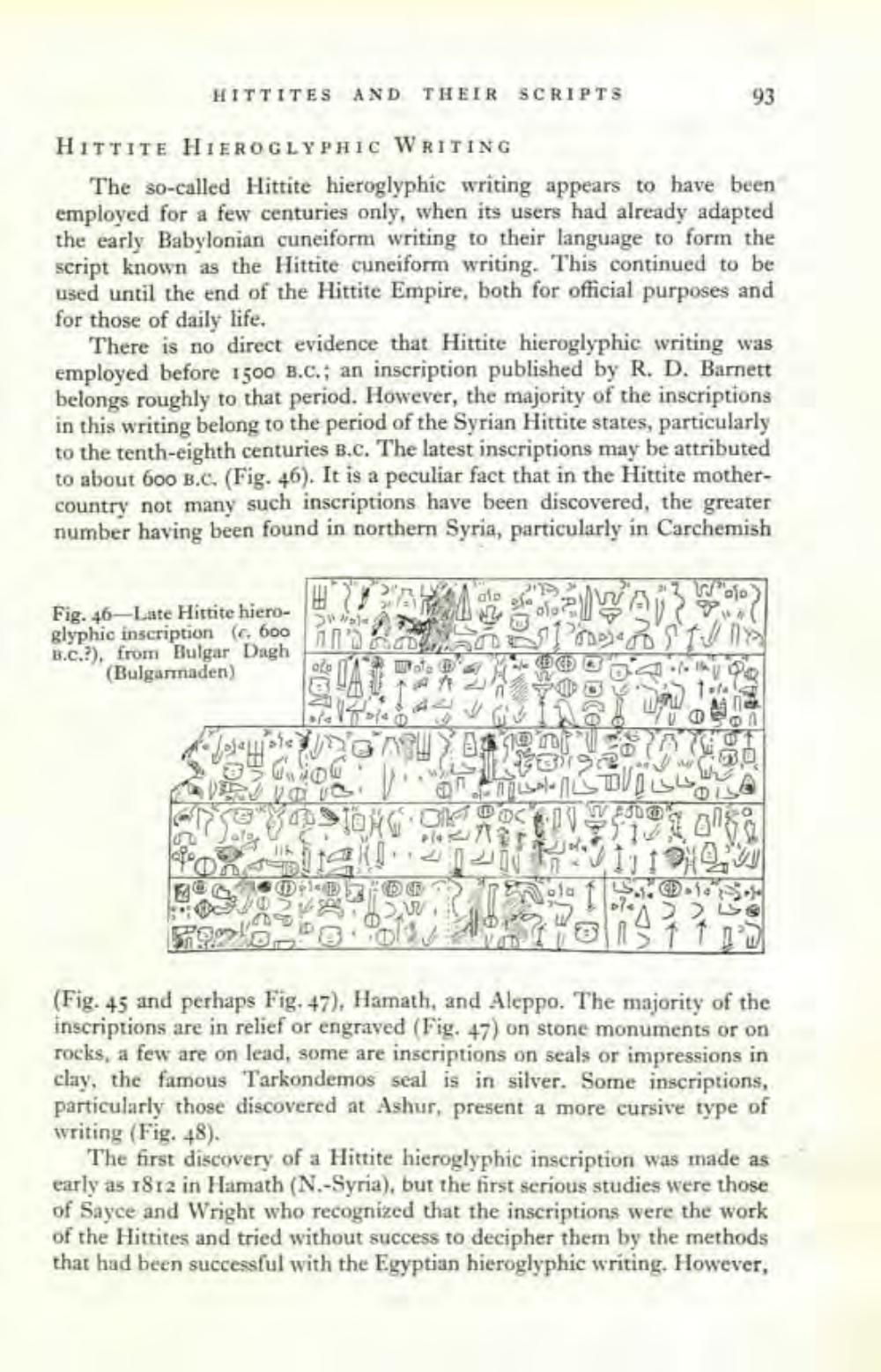________________
HITTITES AND THEIR SCRIPTS
HITTITE HIEROGLYPHIC WRITING
The so-called Hittite hieroglyphic writing appears to have been employed for a few centuries only, when its users had already adapted the early Babylonian cuneiform writing to their language to form the script known as the Hittite cunciform writing. This continued to be used until the end of the Hittite Empire, both for official purposes and for those of daily life.
There is no direct evidence that Hittite hieroglyphic writing was employed before 1500 B.C.; an inscription published by R. D. Barnett belongs roughly to that period. However, the majority of the inscriptions in this writing belong to the period of the Syrian Hittite states, particularly to the tenth-eighth centuries B.c. The latest inscriptions may be attributed to about 600 B.C. (Fig. 46). It is a peculiar fact that in the Hittite mothercountry not many such inscriptions have been discovered, the greater number having been found in northern Syria, particularly in Carchemish
Fig. 46-Late Hittite hieroglyphic inscription ( 600 B.C.?), from Bulgar Dagh (Bulgarnaden)
ore 1
eless
1992
.
c
16012D 03/20
Tenola 11. -15.
JAD
(Fig. 45 and perhaps Fig. 47), Hamath, and Aleppo. The majority of the inscriptions are in relief or engraved (Fig. 47) on stone monuments or on rocks, a few are on lead, some are inscriptions on seals or impressions in clay, the famous Tarkondemos seal is in silver. Some inscriptions, particularly those discovered at Ashur, present 2 more cursive type of writing (Fig. 48).
The first discovery of a Hittite hieroglyphic inscription was made as early as 1812 in Hamath (N.-Syria), but the first serious studies were those of Sayce and Wright who recognized that the inscriptions were the work of the Hittites and tried without success to decipher them by the methods that had been successful with the Egyptian hieroglyphic writing. However,




